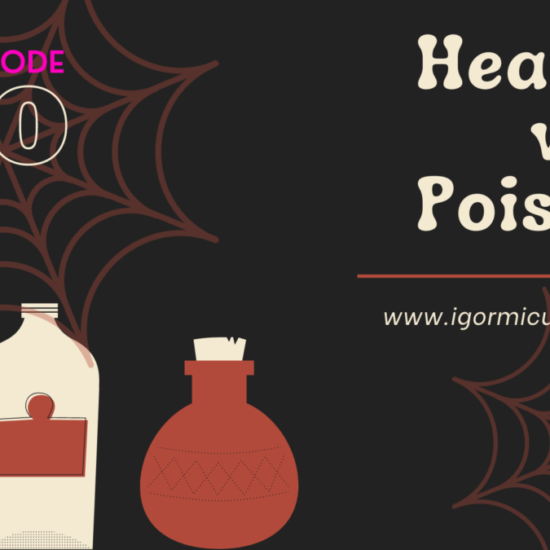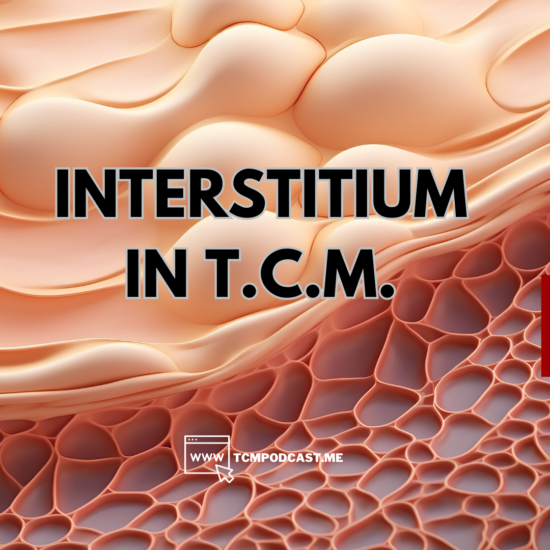Traditional Chinese medicine (TCM) believes that man is a reflection upon the universe, like the existence of a microcosm within the macrocosm. The term ‘climate’ in TCM, refers to agents that cause diseases.
The theory of Chinese medicine uses the names of the organs to illustrate related patterns of physical, emotional, or psychological problems.
‘Wind’ or Feng Xie (Chin. 风邪) is one of the most difficult terms to understand. Chinese medicine as a holistic medicine system considers the human body as a whole and attributes diseases as imbalances between the different elements.
TCM are not only important processes within the body but how pathological processes are manifested in response to external and environmental stimuli. TCM treatments, rather than being aimed at healing a particular symptom, focus on restoring the body’s balance. Wind is one of five climates that is manifested within the five seasons (Autumn, Winter, Spring, Early Summer, and late Summer).
It produces and speeds up pathological movements in the body. Wind in TCM is considered to be the basic causative factor for many diseases. Wind is Yang in nature, and it’s associated with Spring. It penetrates the skin, and the pores through acupuncture meridians, especially through areas related to the neck and upper back.
It is often accompanied by other external factors, such as cold and damp weather. When the Wind invades, the body’s defensive capabilities are weakened, making pores in the skin lose their set, letting pathogens; e.g. bacteria and viruses move in the body.
Usual Wind associated symptoms include common cold, perspiration, and oedema. Chinese medicine classifies Wind into several categories: Cold, Hot, Damp, and Dryness. Wind character is related to movements. It blows fast and causes pain which often changes the body zone. Wind often causes itching, rash, spasms, tremors, and tics, which often move from one part of the body to another.
Generally, Wind attacks the liver in TCM (which means hepatic system) and causes dizziness, spasms, convulsions, and even coma. The liver system involves the physical liver, acupuncture meridian liver-related disharmonies (or patterns), and liver diseases (actual diseases).
Character of Wind
The symptoms of Winds in the body are often characterized by coming and going, sometimes suddenly – very the same as actual wind appears in nature.
Our health is the result of a balance between Yin and Yang and additional forces. TCM basic theory states that vital energy Qi moves and regulates the blood. In TCM, the root of most diseases represents a great imbalance of the various energy systems.
We’re aware of the human body’s capacity to resist different pathogens and to keep intact relative balance. Chinese call it Zheng Qi (true power), which represents inherited and acquired energy stored in the kidneys.
It means that our health pretty much depends on the state of inherited factors. Pathogen factors, Xie Qi are the main triggers of disbalances.
It is considered that pathogen factors are active only in extreme conditions with deep layer influences in the body, causing vital energy, liquids, and blood disbalances. In Chinese medicine, pathogens are called evils which goes back to the shamanistic culture in China. It is believed that any sudden appearance of diseases (like a wind) shows evil possession.
Chinese medicine considers wind as a pathological factor. It invades the body from outside when vital energy (Qi) loses the ability to protect the body. The body tries to expel pathogens through the skin, causing the body to rise in temperature and sweat. In most cases humans do not adapt to the seasonal rhythm of the energies.
Wind nature represents changing locations of influences. It causes movement disorders, e.g., muscle pain, spasm, joints contracture, etc. Wind attacks fast, and change rapidly with fast pace changeable symptoms, such as arthritis, Parkinson’s disease, or stroke. For example, Zhong Feng (Chin. 中风) translated as Wind Strike, in modern medicine represents acute cerebrovascular disease.
Wind generates Humidity, Dryness, and sometimes Heat, which invade the body because of Wind. By its nature, Wind is a pathogen of the Yang type. Its direction is upward, thus it affects the upper body (face and head) and the body’s surface, causing a mismatch between the openings and the closings of the pores of the skin.
Prevention
Keep yourself warm, especially your feet. We are prone to wind in situations when we have sleep disturbance, therefore we should make ourselves comfy. Proper diet and quality foods are the antidote to poor nutrition and a “damp” diet.
Much stress, overwork, and consumption of alcohol or tobacco must be reduced. Proper workout, breathing techniques, yoga, or Qi Gong are the best Wind preventive remedies.
Chicken soup is the most effective for preventing sickness and the common cold. You can add to your favorite chicken soup: goji berries, shitake mushrooms, astragalus, and seaweed.
Garlic and ginger can also be added. Tonic herbs like such as Dong Chong Xia Cao, Ling Zhi, and Yun Zhi can promote a healthy body environment. Tonic herbs may be taken as foods or general health supplements.
General Diet
Transformations of Wind in the body always happen due to deficiency of blood or vital energy (Qi). To strengthen the wei qi should be avoided any toxins or alcohol. Raw and cold foods should be avoided. To treat Wind conditions, it is necessary to follow a diet regime and exclude food that is “hot” and “damp” in nature, e.g., onions, garlic, hot peppers, sweets, coffee, fried and processed food. The general rule is to eat a variety of foods.
Eat regularly, with breakfast at about 7 A.M., lunch around 12 noon, and supper at 6 P.M. Consume less or no meat, about 10% of the diet, about 30% of the diet should be complex carbohydrates. The largest part should be cooked vegetables. Meals should consist largely of lightly cooked vegetables roughly 40% to 60% of your diet. About 30% of the diet should be comprised of complex carbs. Proteins should comprise only about 10% of the diet, with a focus on high-quality sources. The diet should also include plenty of fragrant and lightly spiced dishes. Highly processed foods and well as preservatives should be avoided. Find an appropriate time to eat in peace with the greatest intake in the morning, a moderate amount at lunch, and a small amount for the evening meal.
Supper should be consumed at least 3 hours before sleep.
Proteins should comprise only a focus on high-quality sources. The diet should also include plenty of fragrant and lightly spiced dishes.
To preserve vital energy consumes grains and legumes (brown rice, red rice, millet, oats, barley, lentils, black beans, adzuki beans), nuts (almonds, walnuts, chestnuts), and seeds (sunflower, pumpkin, chia, sesame, flax). Vegetables with roots are also excellent (carrots, daikon, parsnips, parsley root, sweet potato).
I would like to share a very basic idea of how Wind is characterised in Chinese medicine, and very basic remedies and recipes for different Wind syndromes.
Clinical Application
Cold Wind is manifested by an aversion to wind and chill. It is accompanied by fever, headaches and generalized aches usually is a runny nose with thin watery mucus, no sweating, sneezing, and a cough. It is present in occipital headaches, muscle aches, and neck stiffness. Pulse is tight slow and floating. The tongue coating is white.
To expel cold wind TCM prescription Jing Fang Bai Du San (Chin.荆防败毒散) – Schizonepeta and Saposhnikovia Formula is the first choice.
To expel wind, it is the benefit to intake ginger, cinnamon, garlic, onions, cayenne pepper, scallion, chilies, coriander, and mint and cabbage, which are all warming foods with detoxifying properties. One cup of fresh ginger tea with a bit of brown sugar is a great source to worm ap body.
Ginger and brown sugar recipe: three slices of ginger and an appropriate amount of brown sugar are put into a cup and stewed with boiling water. Alternatively, 15 g ginger and 30 g brown sugar are put into a pot, immersed in water, and decocted. The warm decoction can be drunk frequently. Usually, the common cold is cured when sweating.
And to benefit digestion it is recommended to drink tea from citrus peel, or add ginger, coriander, fennel seed, and anise to the food. When experiencing Wind-Cold symptoms chicken broth is a must.
Chinese Ginger Garlic Soup
1 to 2-inch piece of fresh ginger cut into slices,
4 green onions (use only the white part) cut into several pieces,
2 to 3 cloves of garlic, cut into slices,
6 cups chicken bone broth.
How to cook: Put all ingredients into a pot and boil it for 10 minutes. Drink the soup while it is warm or hot.
Hot Wind represents acute fever with mild chills or no chills, mild sweating, headaches (usually frontal), red eyes, sore throat, photosensitivity, thirst, cough with yellow and sticky mucus, nasal obstruction or a nasal discharge that is thick and yellow or green, respiratory problems, constipation, and epistaxis. The pulse is floating and fast, and the tongue is usually red-tipped with a thin yellow coating.
To expel wind heat first TCM herbal choice is Yin Qiao San (Chin.银翘散) – Honeysuckle and Forsythia formula.
For wind-heat symptoms, use peppermint tea or chrysanthemum flower tea, because of their cooling effect. Should be avoided hot-spicy foods.
In TCM, chrysanthemum tea is a cooling tea that helps bring down fever symptoms. Dandelion root tea is considered cooling as well, and it can help clear heat from the liver, lungs and stomach too.
Fruit Salad with Fresh Mint
1 1/2 cups strawberries, cleaned and quartered,
3/4 cup fresh pineapple chunks,
1 cup apples, cored and cut into chunks,
1 cup pears, cored and cut into chunks,
1/4 chopped finely cup mint.
Preparation: In a mixing bowl, combine the cut fruit and toss. Add the fresh mint and stir gently. Serve in parfait dishes or small bowls. The recipe is cool while each ingredient enters the lungs to clear heat or moisten the lungs.
Damp Wind causes common cold symptoms, accompanied by sore limbs, nausea, anorexia, and diarrhea. Its signature symptoms are arthritis-related problems. Acutely it causes relatively mild fever which is unrelieved by sweating and heaviness in the body. It might provocate nausea and vomiting, diarrhea, fatigue, and lethargy. It usually presents a sore throat, thirst, and restlessness. Urine is concentrated. The pulse is soft and a bit rapid. The tongue is greasy white or with a yellow coating. Generally, symptoms are worse in the afternoon.
To expel Wind dampness, the first choice TCM formula is: Xin Jia Xiang Ru Yin (Chin. 新加香薷飲) – Newly Augmented Mosla Drink. To treat wind-dampness choose foods and herbs that are both pungent and aromatic.
For example turmeric, basil, oregano, rosemary, ginger, flax seed oil or other sources, barley, rye, Chinese job’s tears (coix seeds) sprouts, cilantro, mustard greens, turnips, mushrooms especially oyster mushrooms cherries, papaya, black beans, kidney beans, lotus seeds, mung beans, black soya beans eel, quail eggs, sardines.
Foods to restrict or avoid are salads, raw vegetables, eggplants, raw fruits, persimmons, excess amounts of meats or dairy, refined sugars, high doses of vitamin C cold foods like ice cream or smoothies, and iced drinks including ice water.
Soup for relieving Damp Wind
Chinese yam (淮山),
Lotus seed (蓮子),
Euryale ferox (茨實) Poria (雲苓/茯苓),
Lean pork.
Wash all the ingredients and place them in a pot. Fill with enough water to cover the ingredients. Bring to a boil then simmer on low heat for two to three hours.
Dry Wind’s main feature is dryness, particularly of the nose, lips, mouth, and throat, with cracked lips. Usually, a person have aversion to wind and cold, and headache with mild fever and slight sweating. Dry cough with little or no mucus. Pulse is floating and wiry, and a bit rapid. The tongue is dry, with a red body and thin white coating.
To expel wind and moisten dryness first TCM remedy is Sang Xing Tang (Chin. 桑杏湯) – Mulberry leaf and Apricot Kernel Decoction Formula.
Avoid: Generally, avoid spicy (pungent) tasting foods and foods that have a very warm or hot nature such as scallions, chilies, garlic, and wine, and keep your intake light. Also, use ginger with care. It is great to help stop cough and nausea but do not overuse it because it is warming.
Autumn Equinox Soup
½ lb – lean pork, cut into cubes,
20 g – Shan Yao / Dioscorea opposita root / Chinese Yam,
20 g – Qian Shi / Euryale ferox seed / Fox Nut Barley,
20 g – Bei Sha Shen / Glehnia littoralis root,
15 g – Bai He / Lillium brownii bulb / Lily Bulb,
15 g – Yu Zhu / Polygonatum odoratum rhizome,
15 g – Yi Yi Ren / Coix lacryma-jobi seed / Job’s Tears,
15 g – Lian Zi (Bai) / Nelumbo nucifera seed (skinless) / White Lotus Seed,
3-4 pc – Long Yan Rou / Dimocarpus longan fruit / Longan Fruit,
2 pc – Wu Hua Guo / Dried Figs, cut in half,
Salt to taste.
Cooking Instructions: Scald pork in boiling water for 2-3 minutes, drain and rinse the meat. Rinse herbs and place all ingredients in 2 quarts of water and boil it for 30 minutes. Reduce to low heat and simmer for 2 hours. Skim top as needed. Salt it a bit and serve.
Hopefully, now you’re more acquainted with Wind and its syndromes from the vision of Chinese medicine. In real-life situations above Wind recipes are very useful as health remedies.


